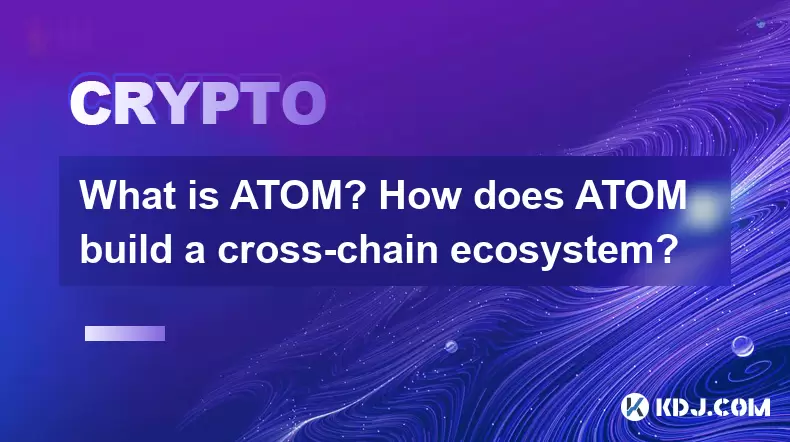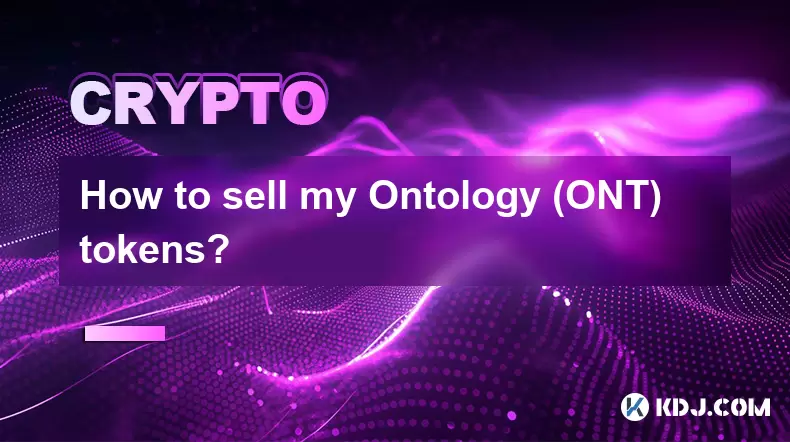-
 Bitcoin
Bitcoin $116800
0.71% -
 Ethereum
Ethereum $4211
6.94% -
 XRP
XRP $3.276
1.68% -
 Tether USDt
Tether USDt $1.000
0.02% -
 BNB
BNB $807.0
3.00% -
 Solana
Solana $180.5
3.24% -
 USDC
USDC $0.9999
0.01% -
 Dogecoin
Dogecoin $0.2406
9.02% -
 TRON
TRON $0.3357
-1.10% -
 Cardano
Cardano $0.8047
3.16% -
 Hyperliquid
Hyperliquid $43.81
7.97% -
 Chainlink
Chainlink $21.08
10.16% -
 Stellar
Stellar $0.4506
1.97% -
 Sui
Sui $3.916
4.69% -
 Bitcoin Cash
Bitcoin Cash $568.3
-1.85% -
 Hedera
Hedera $0.2628
2.48% -
 Avalanche
Avalanche $24.17
4.54% -
 Ethena USDe
Ethena USDe $1.001
0.03% -
 Litecoin
Litecoin $121.4
0.35% -
 Toncoin
Toncoin $3.408
2.28% -
 UNUS SED LEO
UNUS SED LEO $8.978
-0.08% -
 Shiba Inu
Shiba Inu $0.00001376
7.59% -
 Uniswap
Uniswap $10.86
2.94% -
 Polkadot
Polkadot $4.079
5.33% -
 Dai
Dai $1.000
0.02% -
 Pepe
Pepe $0.00001231
10.28% -
 Bitget Token
Bitget Token $4.502
0.79% -
 Cronos
Cronos $0.1576
3.63% -
 Monero
Monero $271.1
0.48% -
 Ethena
Ethena $0.7336
18.38%
What is ATOM? How does ATOM build a cross-chain ecosystem?
ATOM, the native token of the Cosmos Network, facilitates cross-chain communication and governance, enabling a scalable ecosystem of interconnected blockchains.
May 12, 2025 at 03:42 pm

What is ATOM? How does ATOM build a cross-chain ecosystem?
ATOM is the native cryptocurrency of the Cosmos Network, a decentralized network of independent, parallel blockchains, each powered by Byzantine Fault-Tolerant (BFT) consensus algorithms like Tendermint. ATOM plays a crucial role in the ecosystem by facilitating transactions, governance, and incentivizing participants. In this article, we will delve into what ATOM is and how it contributes to building a cross-chain ecosystem.
Understanding ATOM
ATOM is the native token of the Cosmos Network, and it serves multiple purposes within the ecosystem. Primarily, ATOM is used as a means of payment for transaction fees on the Cosmos Hub, the central blockchain of the Cosmos Network. Additionally, ATOM holders can participate in the governance of the network by voting on proposals that affect the protocol's development and operation. This democratic approach ensures that the community has a say in the future of the network.
Moreover, ATOM is used to incentivize validators and delegators who secure the network. Validators are responsible for adding new blocks to the blockchain, and delegators can stake their ATOM to support validators, earning rewards in return. This staking mechanism not only secures the network but also encourages participation and engagement from the community.
The Role of ATOM in Cross-Chain Communication
One of the core features of the Cosmos Network is its ability to facilitate cross-chain communication. This is achieved through the Inter-Blockchain Communication (IBC) protocol, which allows different blockchains within the Cosmos ecosystem to exchange data and assets securely. ATOM plays a vital role in this process by serving as the native token that can be transferred across these interconnected blockchains.
The IBC protocol enables developers to build applications that can interact with multiple blockchains simultaneously, creating a seamless and interconnected ecosystem. By using ATOM as the standard token for these interactions, the Cosmos Network ensures that users can easily move assets and data across different chains, enhancing the overall efficiency and usability of the network.
Building a Cross-Chain Ecosystem with ATOM
The process of building a cross-chain ecosystem with ATOM involves several key components and steps. Here’s a detailed look at how this ecosystem is constructed:
Inter-Blockchain Communication (IBC) Protocol: The IBC protocol is the backbone of cross-chain communication in the Cosmos Network. It allows for the secure transfer of tokens and data between different blockchains. ATOM is used as the primary token for these transactions, ensuring that users can move assets seamlessly across the network.
Zones and Hubs: The Cosmos Network is composed of zones (independent blockchains) and hubs (central blockchains that connect zones). The Cosmos Hub, the central hub of the network, uses ATOM as its native token. By connecting zones through the hub, the network creates a scalable and interconnected ecosystem where ATOM can be used across multiple chains.
IBC-Enabled Applications: Developers can build applications that leverage the IBC protocol to interact with multiple blockchains. These applications can use ATOM for transactions and governance, creating a unified experience for users across the network. Examples of such applications include decentralized exchanges, lending platforms, and cross-chain oracles.
Staking and Governance: ATOM holders can stake their tokens to support validators, who are responsible for securing the network. This staking mechanism not only incentivizes participation but also allows ATOM holders to participate in governance decisions, ensuring that the network evolves in line with the community's interests.
Interoperability with Other Blockchains: The Cosmos Network aims to achieve interoperability with other major blockchains like Ethereum and Bitcoin. Through the use of ATOM and the IBC protocol, the network can facilitate the transfer of assets and data between these external blockchains and the Cosmos ecosystem, expanding its reach and utility.
The Importance of ATOM in the Cosmos Ecosystem
ATOM is not just a cryptocurrency; it is the lifeblood of the Cosmos Network. Its multifaceted role in facilitating transactions, governance, and cross-chain communication makes it indispensable to the ecosystem. By using ATOM, the Cosmos Network can create a decentralized, scalable, and interconnected network of blockchains, each with its own unique features and applications.
The use of ATOM as the native token ensures that the network remains cohesive and efficient. Users can easily move assets across different zones and hubs, participate in governance, and engage with a wide range of IBC-enabled applications. This versatility and utility make ATOM a cornerstone of the Cosmos Network's vision for a decentralized future.
Practical Examples of ATOM in Action
To illustrate how ATOM functions within the Cosmos ecosystem, let's consider a few practical examples:
Cross-Chain Asset Transfer: Suppose a user wants to move assets from the Cosmos Hub to another zone within the network. They can use ATOM to pay for the transaction fees and execute the transfer through the IBC protocol. This seamless transfer enhances the liquidity and utility of ATOM across the ecosystem.
Decentralized Governance: ATOM holders can participate in the governance of the Cosmos Network by voting on proposals. For instance, if a proposal is made to upgrade the network's consensus algorithm, ATOM holders can vote on whether to implement the change, ensuring that the community's voice is heard.
Staking for Rewards: Users can stake their ATOM to support validators, who are responsible for securing the network. By doing so, they can earn rewards in ATOM, incentivizing them to participate actively in the network's security and governance.
Interoperability with External Blockchains: Through the use of ATOM and the IBC protocol, the Cosmos Network can facilitate the transfer of assets and data between external blockchains like Ethereum and Bitcoin. This interoperability enhances the network's utility and reach, allowing users to leverage the strengths of multiple blockchain ecosystems.
Frequently Asked Questions
Q: How can I acquire ATOM?
A: You can acquire ATOM through various cryptocurrency exchanges that list the token. Popular exchanges like Binance, Coinbase, and Kraken offer trading pairs for ATOM. You can purchase ATOM using other cryptocurrencies like Bitcoin or Ethereum, or in some cases, with fiat currency.
Q: Can I use ATOM on other blockchains outside the Cosmos Network?
A: While ATOM is primarily used within the Cosmos Network, there are efforts to achieve interoperability with other major blockchains. Through the IBC protocol, ATOM can be transferred to and from other blockchains that support IBC, such as those in the Cosmos ecosystem. However, direct use on external blockchains like Ethereum or Bitcoin is not currently supported.
Q: What are the risks associated with staking ATOM?
A: Staking ATOM involves certain risks, including the potential for slashing, where a portion of your staked tokens can be penalized if the validator you support misbehaves. Additionally, the value of ATOM can fluctuate, affecting the overall value of your staked tokens. It's important to research and understand these risks before participating in staking.
Q: How does ATOM contribute to the scalability of the Cosmos Network?
A: ATOM contributes to the scalability of the Cosmos Network by enabling cross-chain communication through the IBC protocol. This allows the network to connect multiple independent blockchains, each capable of processing transactions in parallel. By facilitating the seamless transfer of assets and data across these chains, ATOM helps the network achieve greater scalability and efficiency.
Disclaimer:info@kdj.com
The information provided is not trading advice. kdj.com does not assume any responsibility for any investments made based on the information provided in this article. Cryptocurrencies are highly volatile and it is highly recommended that you invest with caution after thorough research!
If you believe that the content used on this website infringes your copyright, please contact us immediately (info@kdj.com) and we will delete it promptly.
- AI Coin Mania: Dubai Millionaires Eye 20x Gains!
- 2025-08-09 23:10:12
- ChatGPT's Hot Takes: Meme Coins to Buy Now for a Wild 2025!
- 2025-08-09 23:10:12
- Jurassic Park Vibes in Your Pocket: The Colourful Canadian Coin Featuring a Dinosaur Eye
- 2025-08-09 23:50:12
- Altcoins on the Radar: VeChain, Ethereum, and the Shifting Crypto Landscape
- 2025-08-09 23:50:12
- Crypto Airdrops & Opportunities: What's Hot in August 2025
- 2025-08-09 22:30:12
- XRP, Cardano, and the Alluring Alternatives: A 2025 Crypto Landscape
- 2025-08-09 22:35:12
Related knowledge

How to purchase Aragon (ANT)?
Aug 09,2025 at 11:56pm
Understanding Aragon (ANT) and Its PurposeAragon (ANT) is a decentralized governance token that powers the Aragon Network, a platform built on the Eth...

Where can I buy UMA (UMA)?
Aug 07,2025 at 06:42pm
Understanding UMA and Its Role in Decentralized FinanceUMA (Universal Market Access) is an Ethereum-based decentralized finance (DeFi) protocol design...

How to buy Storj (STORJ) tokens?
Aug 09,2025 at 07:28am
Understanding Storj (STORJ) and Its Role in Decentralized StorageStorj is a decentralized cloud storage platform that leverages blockchain technology ...

What is the best app to buy Nano (NANO)?
Aug 09,2025 at 03:35am
Understanding Nano (NANO) and Its Unique FeaturesNano is a feeless, instant cryptocurrency designed for fast peer-to-peer transactions. Unlike many ot...

Where can I purchase Siacoin (SC)?
Aug 08,2025 at 11:14am
Understanding Siacoin (SC) and Its Role in the Sia NetworkSiacoin (SC) is the native cryptocurrency of the Sia decentralized cloud storage platform, a...

How to sell my Ontology (ONT) tokens?
Aug 09,2025 at 06:08pm
Understanding Ontology (ONT) and Its Trading EcosystemBefore selling your Ontology (ONT) tokens, it's essential to understand the nature of the crypto...

How to purchase Aragon (ANT)?
Aug 09,2025 at 11:56pm
Understanding Aragon (ANT) and Its PurposeAragon (ANT) is a decentralized governance token that powers the Aragon Network, a platform built on the Eth...

Where can I buy UMA (UMA)?
Aug 07,2025 at 06:42pm
Understanding UMA and Its Role in Decentralized FinanceUMA (Universal Market Access) is an Ethereum-based decentralized finance (DeFi) protocol design...

How to buy Storj (STORJ) tokens?
Aug 09,2025 at 07:28am
Understanding Storj (STORJ) and Its Role in Decentralized StorageStorj is a decentralized cloud storage platform that leverages blockchain technology ...

What is the best app to buy Nano (NANO)?
Aug 09,2025 at 03:35am
Understanding Nano (NANO) and Its Unique FeaturesNano is a feeless, instant cryptocurrency designed for fast peer-to-peer transactions. Unlike many ot...

Where can I purchase Siacoin (SC)?
Aug 08,2025 at 11:14am
Understanding Siacoin (SC) and Its Role in the Sia NetworkSiacoin (SC) is the native cryptocurrency of the Sia decentralized cloud storage platform, a...

How to sell my Ontology (ONT) tokens?
Aug 09,2025 at 06:08pm
Understanding Ontology (ONT) and Its Trading EcosystemBefore selling your Ontology (ONT) tokens, it's essential to understand the nature of the crypto...
See all articles

























































































